Remember when television was just three networks and maybe an independent channel or two? Those ’70s sitcoms we all gathered around to watch were often zany, laugh-tracked affairs designed to give us a chuckle after dinner. But sometimes, these same shows that had us in stitches one week would suddenly tackle serious issues the next, leaving us with something to think about long after the credits rolled.
1. All in the Family
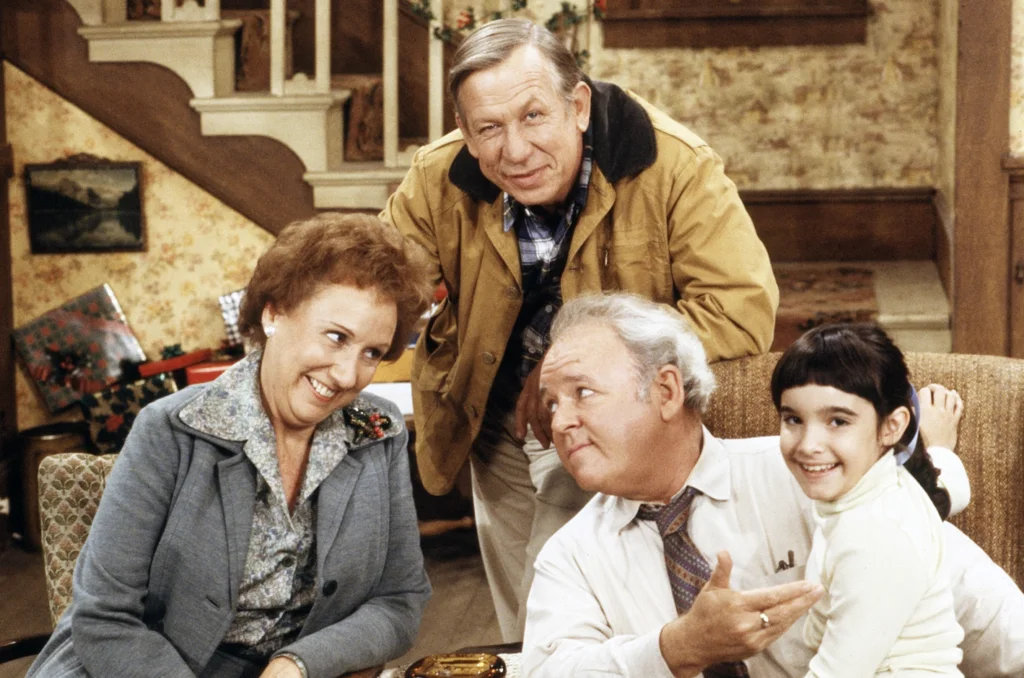
When Archie Bunker first strutted onto our screens in 1971, his bigoted rants and malapropisms had audiences howling with laughter at this caricature of the close-minded American. Carroll O’Connor’s masterful performance walked a fine line between making Archie sympathetic and exposing the absurdity of his outdated views. Creator Norman Lear used the sitcom format as a Trojan horse, smuggling social commentary into America’s living rooms under the guise of comedy. The sitcom left such a mark that to this day Variety reflects on its legacy all these decades later.
As the series progressed, it increasingly addressed weighty topics like rape, breast cancer, and the Vietnam War with surprising gravity. One of the most shocking episodes featured Edith’s near-sexual assault, played with almost no humor whatsoever, forcing viewers to confront uncomfortable realities they might have preferred to ignore. The show’s willingness to transition from Archie’s hilarious mispronunciations to deadly serious social issues revolutionized what a sitcom could accomplish, paving the way for every thoughtful comedy that followed.
2. M*A*S*H

This sitcom about Army doctors during the Korean War began as a fairly straightforward adaptation of the irreverent 1970 film, with Alan Alda’s Hawkeye Pierce pulling pranks and chasing nurses. Early episodes featured broad physical comedy, elaborate practical jokes on Major Burns, and hijinks that sometimes made light of the war backdrop. The laugh track (which creator Larry Gelbart fought against but was forced to include) emphasized the show’s initial positioning as a comedy first and foremost. Screen Rant has made some eye-opening revelations about the historic finale that shines a new light on everything.
By the middle seasons, MAS*H had evolved into something far more profound, using humor as a coping mechanism for characters dealing with the horrors of war. The departure of comedic foil Frank Burns and the introduction of the more complex Charles Winchester marked a turning point toward more dramatic storytelling. The series finale “Goodbye, Farewell and Amen,” which depicted Hawkeye’s nervous breakdown after witnessing a mother smother her own child, contained almost no attempts at humor and became the most-watched television episode in history, proving that audiences were ready for sitcoms that made them think and feel along with the laughter.
3. Good Times
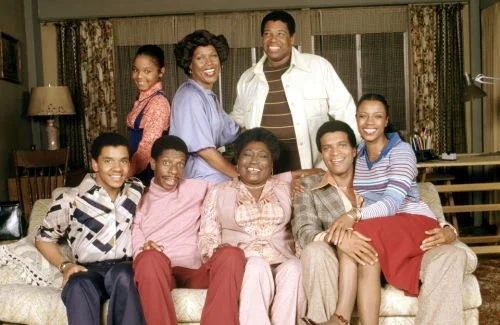
When this Norman Lear creation debuted in 1974, it centered on the Evans family’s good-natured ability to find joy despite their economic struggles in Chicago’s housing projects. J.J.’s catchphrase “Dy-no-mite!” and his physical comedy made him an instant fan favorite, often stealing scenes with his exaggerated reactions and colorful outfits. The early episodes balanced humor with the reality of poverty but generally maintained an upbeat tone that suggested the family could overcome any obstacle through togetherness. Just recently, The Hollywood Reporter reflected on the show’s continual impact five decades later.
The show took a dramatic turn when John Amos’s character James Evans, Sr. was killed off, forcing the family to cope with the loss of their patriarch and provider. This shocking development (which happened partly because Amos had conflicts with producers over the show’s direction) pushed Good Times into territory few sitcoms had explored: the reality of sudden death and its economic and emotional impact on a family. The remaining seasons dealt with increasingly serious topics like drug addiction, child abuse, and political corruption, sometimes abandoning comedy entirely to make powerful statements about life in America’s inner cities.
4. One Day at a Time
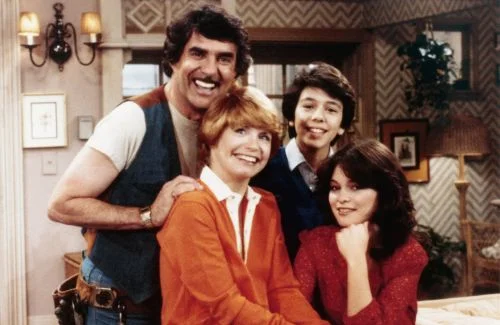
This sitcom about a divorced mother raising two teenage daughters in Indianapolis started with fairly standard family comedy scenarios about dating, school, and generational misunderstandings. Bonnie Franklin’s Ann Romano represented the new normal of single motherhood in the ’70s, while Pat Harrington’s building superintendent Schneider provided comic relief with his macho posturing and unwanted advice. The show initially focused on lighthearted family dynamics and the humorous aspects of Ann’s newfound independence.
As the series progressed, One Day at a Time fearlessly tackled topics like teenage suicide, sexual harassment, and drug addiction, often dedicating entire episodes to issues with little comic relief. The two-part episode where youngest daughter Julie elopes with her boyfriend abandoned the show’s usual comedy to explore the genuine pain and conflict that family crises create. Creator Norman Lear (who appears repeatedly on this list) once again demonstrated his belief that sitcoms could be vehicles for meaningful social commentary while still connecting with mainstream America.
5. The Facts of Life
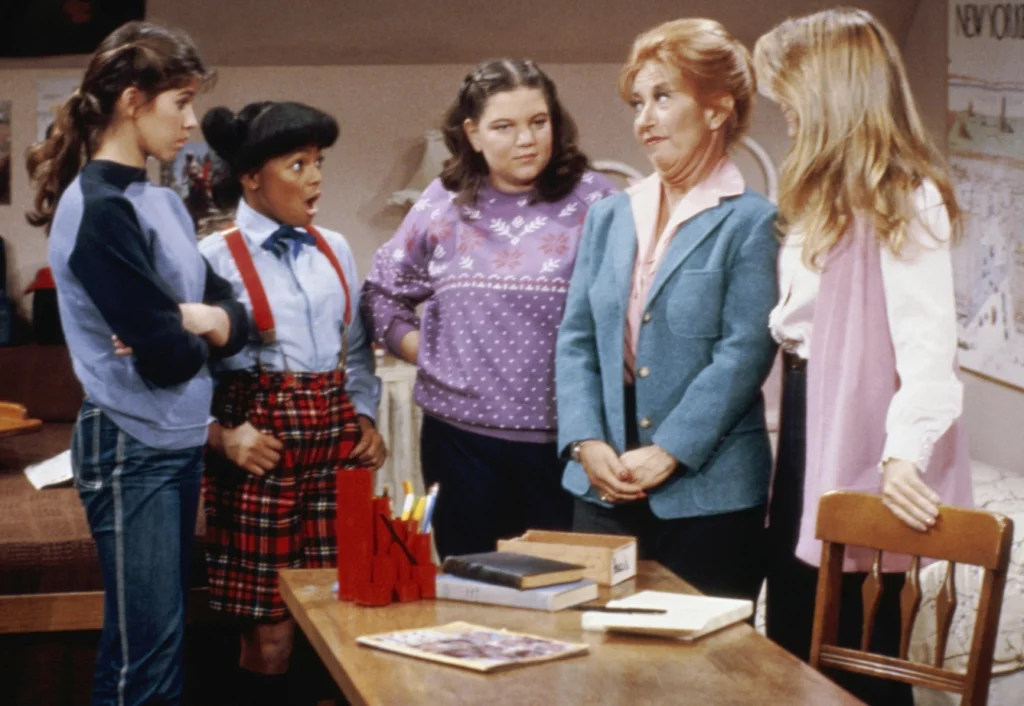
When this Girls School-set spin-off of “Diff’rent Strokes” premiered in 1979, it focused on the comic antics of a group of privileged teens under the watchful eye of housemother Mrs. Garrett. Early episodes featured typical teen hijinks: pillow fights, practical jokes, and lighthearted rivalries between the girls from different backgrounds. The large original cast allowed for broad comedy and slapstick situations that rarely ventured beyond typical sitcom fare.
After the first season, the show underwent a dramatic overhaul, reducing the cast and beginning to address serious issues facing teenage girls in the late ’70s and early ’80s. Episodes tackled subjects like bulimia, peer pressure, disabilities, and teen pregnancy with a sensitivity that was groundbreaking for its time. The episode “Cousin Geri” about a character with cerebral palsy won an Emmy for addressing disabilities with both humor and dignity, demonstrating the show’s evolution from frivolous entertainment to thoughtful examination of real-world issues.
6. The Jeffersons
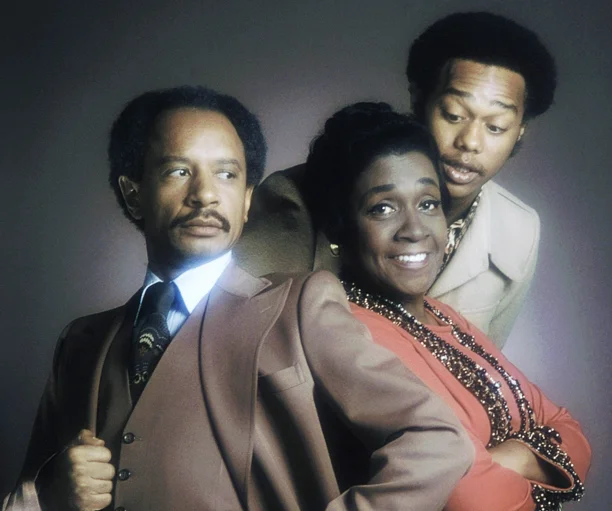
This All in the Family spin-off initially played George Jefferson’s nouveau riche antics and conflicts with his white neighbors and British butler for broad laughs. Sherman Hemsley’s physical comedy and perfect timing made George’s strutting and outbursts hilarious, while Isabel Sanford’s exasperated reactions as wife Louise provided the perfect counterbalance. The fish-out-of-water premise of a working-class family suddenly wealthy and living in a deluxe apartment in the sky was mining comic gold.
As the series matured, it increasingly explored the complexities of race relations, class differences, and social mobility in America. The show didn’t abandon humor but began weaving more thoughtful examinations of prejudice, identity, and changing social norms into its storylines. Episodes dealing with cross-burning, suicide, and racial discrimination showed a willingness to risk its comedy credentials to make important statements about American society, demonstrating remarkable range for what could have been just another sitcom.
7. Three’s Company

This farce built on misunderstandings and double entendres was initially pure slapstick comedy with John Ritter’s physical prowess as Jack Tripper at the center. The premise—a man pretending to be gay so he could share an apartment with two women—was played strictly for laughs, with landlord Mr. Roper’s homophobia and misogyny treated as punchlines rather than problems. Early seasons rarely ventured beyond bedroom comedy and mistaken identities, making it perhaps the most consistently silly hit of the decade.
Surprisingly, even this lightweight sitcom occasionally ventured into serious territory, particularly in episodes dealing with stalking, sexual harassment, and date rape attempts. One notable episode featured Jack being drugged at a party, with the show treating the situation with unexpected gravity despite its typically madcap style. While never abandoning its comic roots like some shows on this list, Three’s Company occasionally reminded viewers that the vulnerabilities and dangers its premise was built on had real-world implications beyond the laugh track.
8. What’s Happening!!
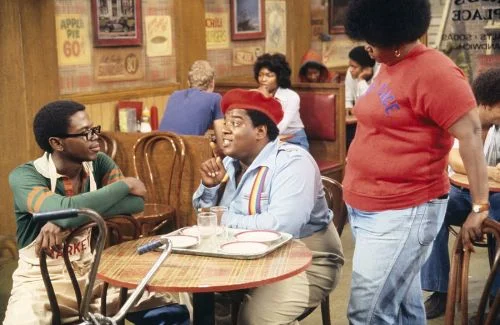
This sitcom about three teenage friends growing up in Watts began as a lighthearted look at high school life with emphasis on Roger’s unrequited crushes, Dwayne’s catchphrase “Hey, hey, hey!” and Rerun’s memorable dance moves. Fred Berry’s physical comedy as Rerun particularly delighted audiences, with his character’s name referencing his academic struggles (“re-run” because he had to repeat classes). The show’s early focus was on the universal aspects of teenage life rather than specific social issues.
Later seasons began addressing topics like drug use, racial discrimination, and absent fathers with surprising depth. An episode where Rerun is pressured to illegally record a Doobie Brothers concert showed the serious consequences of peer pressure, while the introduction of Roger’s previously absent father explored the complex emotions of abandoned children. What started as a simple teen comedy evolved to provide thoughtful perspectives on growing up in urban America during economically challenging times, delivering substance along with its signature laughs.
9. Maude
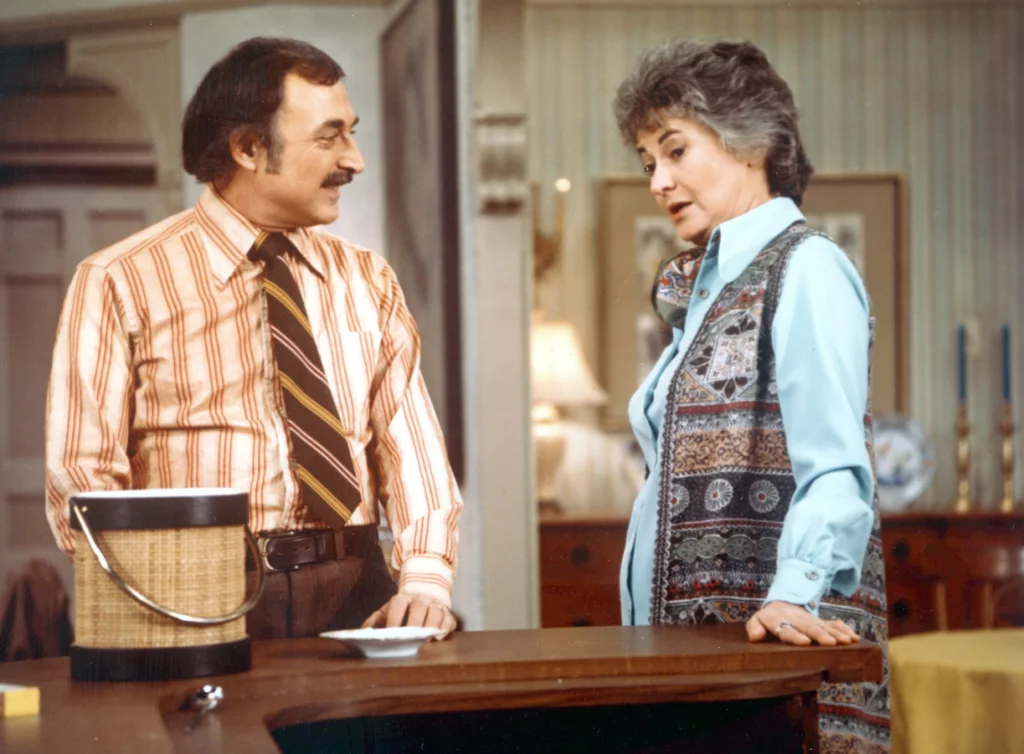
Bea Arthur’s outspoken, liberal title character began the series as almost a political cartoon—the perfect foil to her cousin Archie Bunker from All in the Family. Her verbose takedowns of conservative positions and her husband Walter’s reactions to her feminist pronouncements provided reliable comedy in early episodes. The show initially used its multi-generational household primarily for culture clash humor and political punchlines.
The series made television history with its two-part episode about Maude’s abortion, aired just months after Roe v. Wade, treating the subject with remarkable nuance and minimal humor. Other episodes tackled alcoholism, mental illness, and domestic violence with a seriousness that belied the show’s sitcom format. Maude’s struggles with menopause were portrayed not just for laughs but as a genuine life transition deserving of understanding, representing a revolutionary approach to women’s health issues on primetime television.
10. The Bob Newhart Show
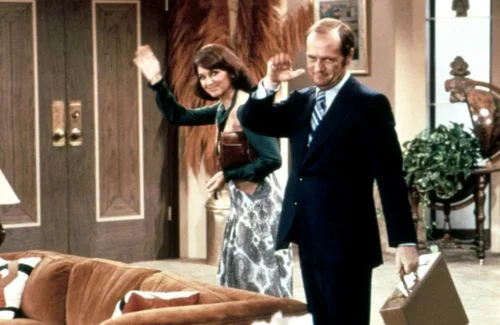
Bob Newhart’s deadpan delivery and the eccentric patients at his psychology practice provided plenty of laughs in the early seasons of this beloved sitcom. The show initially focused on the humorous aspects of Bob’s therapy sessions and his apartment building’s quirky residents, with Newhart’s famous telephone conversations and restrained reactions to absurdity driving much of the comedy. His marriage to Emily (Suzanne Pleshette) was portrayed as loving and stable, unusual for sitcoms of the era.
As the series progressed, it increasingly explored the genuine psychological issues behind the comedic neuroses of its characters. Episodes dealing with suicidal patients, severe depression, and relationship breakdown were handled with remarkable sensitivity while still finding appropriate moments for humor. The show’s willingness to acknowledge that the problems bringing patients to Bob’s office had real, sometimes devastating consequences beneath their comedic presentation demonstrated a respect for mental health issues rare for its time.
11. Barney Miller
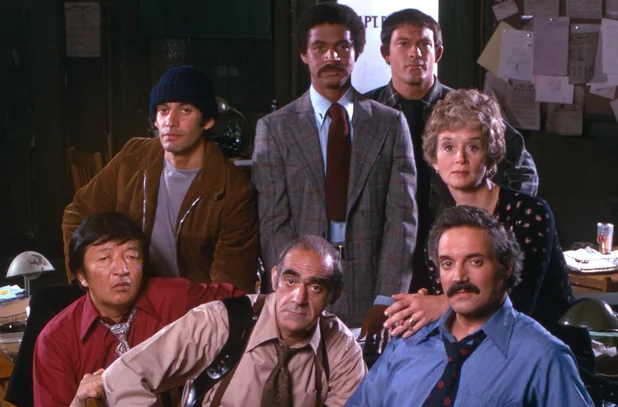
This precinct-based sitcom began as a fairly straightforward workplace comedy with Captain Miller (Hal Linden) managing a crew of distinctive detective personalities. Early episodes emphasized the squad room’s quirky characters and the bizarre but minor crimes they encountered, with Fish’s health complaints, Harris’s stylish attire, and Wojciehowicz’s enthusiastic naivety providing reliable laughs. The show’s confined setting (rarely leaving the squad room) created a pressure-cooker environment perfect for comedy.
As the series evolved, it increasingly addressed serious issues like officer corruption, racial profiling, and the flaws in the criminal justice system. The show’s portrayal of Detective Harris as an intellectual Black officer with literary ambitions challenged stereotypes, while its treatment of gay characters became increasingly nuanced and respectful for its era. Barney Miller managed the remarkable feat of acknowledging the serious issues facing urban police departments while maintaining its fundamental humanity and humor, earning respect from actual officers for its authentic portrayal of police work.
12. Sanford and Son
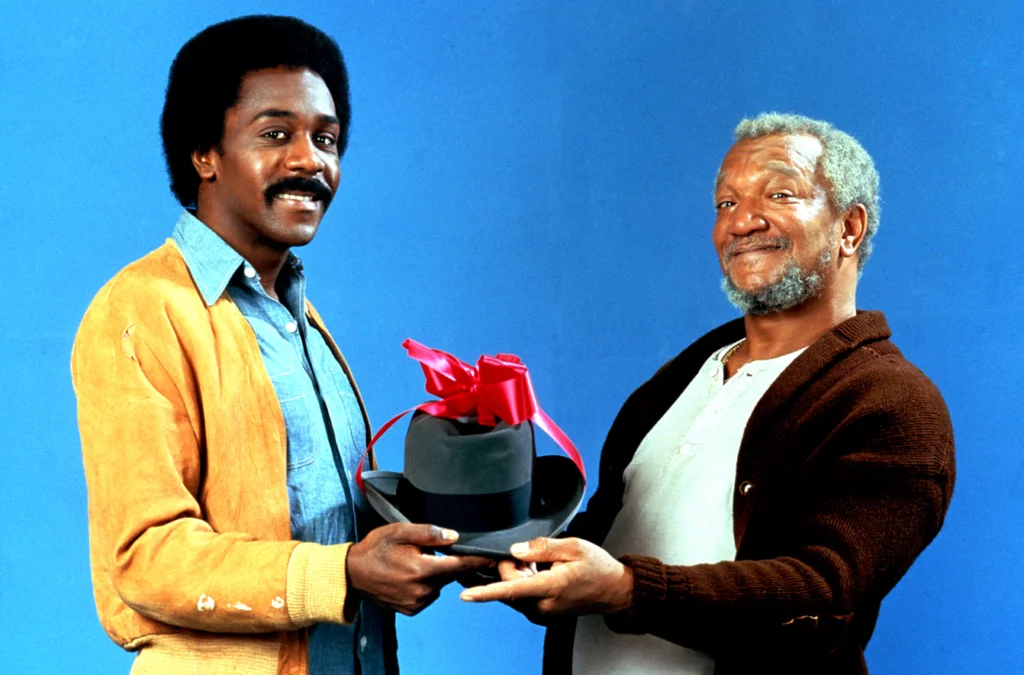
Redd Foxx’s portrayal of junk dealer Fred Sanford began as broadly comedic, with his fake heart attacks (“I’m coming, Elizabeth!”) and insult-laden exchanges with his son Lamont providing the primary laughs. The show’s early focus was on Fred’s get-rich-quick schemes and his outrageous behavior, with his friend Grady and Aunt Esther serving as perfect comedic foils. The junkyard setting provided endless opportunities for physical comedy and visual gags.
Later seasons incorporated more thoughtful explorations of aging, racial tension, and economic hardship in the Watts neighborhood of Los Angeles. Episodes dealing with Fred’s health concerns took on deeper resonance as the character faced his mortality more honestly, while the father-son dynamics evolved beyond simple punchlines to explore genuine familial love and obligation. Without abandoning its comedic foundation, Sanford and Son occasionally provided viewers with powerful moments of truth about working-class life and the specific challenges facing Black Americans in the 1970s.
13. The Mary Tyler Moore Show
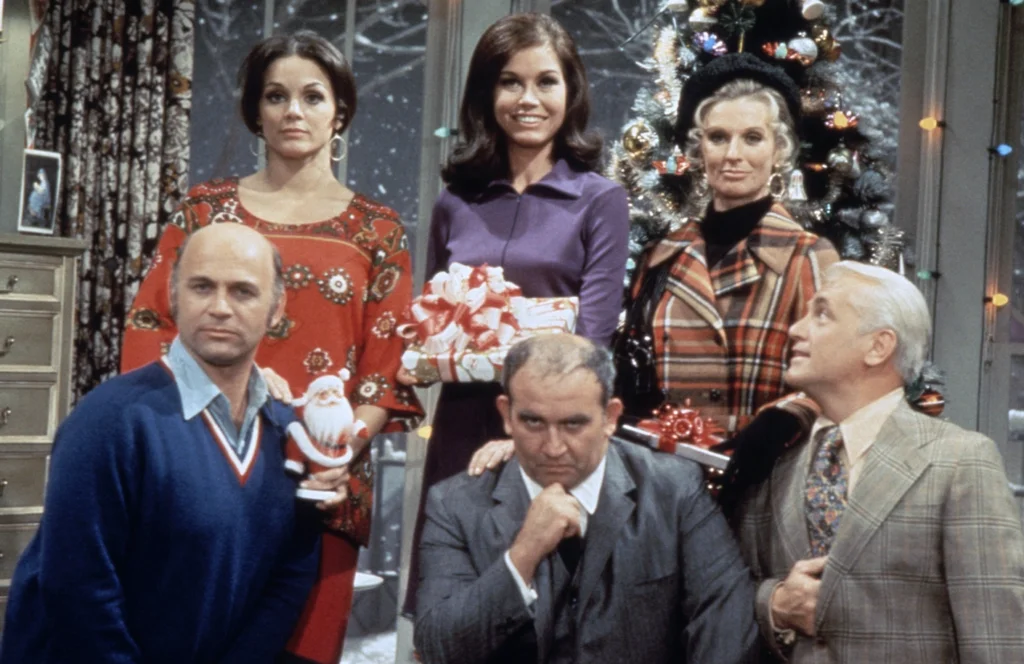
When Mary Richards tossed her hat in the air during the opening credits, viewers knew they were in for a workplace comedy about a single woman making it on her own in Minneapolis. Early episodes focused on the humorous aspects of Mary’s adjustment to her new life and the colorful characters at WJM-TV, particularly Ted Baxter’s pompous incompetence and Murray’s sardonic remarks. Mary’s dating life and her attempts to balance work and personal relationships provided much of the early comedy.
What distinguished this groundbreaking series was its increasing willingness to address serious topics like equal pay, premarital relations, and antisemitism while maintaining its warm comedic tone. The famous “Chuckles Bites the Dust” episode masterfully balanced comedy with genuine reflections on mortality, while Lou Grant’s divorce storyline treated marital breakdown with remarkable sensitivity. The show’s final episode, with its tearful group hug and lights being turned off, acknowledged the genuine emotional connections viewers had formed with these characters who had evolved from comic types to fully realized human beings over seven remarkable seasons.
Those ’70s sitcoms we cherished weren’t just mindless entertainment—they were stealth vehicles for social change, using our laughter as a gateway to deeper understanding. These shows taught us that humor and seriousness aren’t mutually exclusive, and that sometimes the most powerful way to address difficult topics is through characters we’ve come to love for making us laugh. In our current era of dramatically serious prestige television, it’s worth remembering that these boundary-pushing sitcoms were the first to show us that popular entertainment could make us think while it made us smile.


